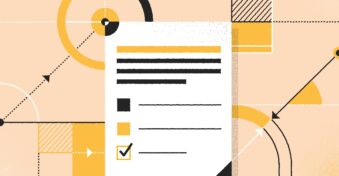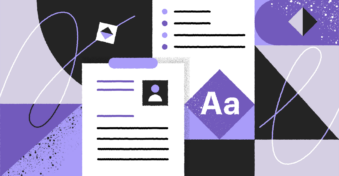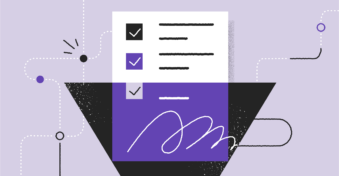A liability waiver is simply a legally binding agreement that informs one party of the potential risks associated with a specific activity so they can voluntarily release the other party of any legal liability before proceeding.
If you’ve ever thought “why use a waiver template when I can write one myself?” you’re not alone. Many people choose to draft their own waivers. However, there are a few key benefits that you might miss out on if you don’t use a waiver template.
We’re here to help you understand the importance of waiver agreements, why you should use waiver templates, how you can create waiver templates for your business, and everything that should be included in liability waivers. Whatever your reason, we have you covered.
Why Is a Waiver Agreement Important For Business?
The purpose of a liability waiver is to protect companies from legal responsibility in the event a customer is injured or killed. They are most commonly used in high-risk scenarios like extreme sports, obstacle courses, escape rooms, and haunted houses.
A few types of liability waivers include (but are not limited to):
- Event liability waivers
- General liability waivers
- Legal release forms
- Liability release forms
Liability waivers become binding the moment they’re signed, whether on paper or digitally, but they’ll only be admissible and legal in court if they include all the necessary information for the signer.
In addition to lacking information, waivers may also become void in other circumstances like gross negligence. Furthermore, a waiver will become void if it is contrary to public policy, law, or customs.

How to Create a Waiver Template For Your Business
There are plenty of benefits to using a template for your liability waivers.
Using templates for your liability waivers, both printed and digital, will:
- Save you time
- Ensure that all the necessary information is included
- Guarantee that your document is properly formatted and structured
- Make your business look more professional
- Increase the odds that your waiver agreement will be admissible in court
- Protect your company from lawsuits and other legal liabilities
Every business is unique, and that’s why broad liability waiver templates aren’t a one size fits all. It’s essential to have a waiver template that is tailored to your specific business model and needs. But how do you create a suitable waiver template for your business?
#1 Research
Rather than trying to create a fully unique template, doing research and looking at existing liability waivers can serve as a helpful guide. This will ensure that you don’t make any agreement-voiding mistakes in your waivers.
The caveat is that you should be extremely targeted in your research.
If you’re running an escape room business, you shouldn’t create a waiver template that’s better suited to bouldering companies and vice-versa. Look at online publications or trade magazines to find waiver examples from the same industry.
#2 Regional Considerations
It’s important to remember that laws and regulations can vary widely from one region to another. As such, you should always check the liability waiver regulations in your country, state, or city before creating a template for your business.
It’s also worth noting that certain regions are less likely to uphold liability waivers due to their regional legal precedents.
#3 Describe Risks
Without a clear and thorough description of the potential risks involved, liability waivers are very unlikely to be upheld in a court of law. The same is true if you provide an inaccurate or downplayed representation of the risks.
Articulate the specific risks that come with the venue and activity the customer will be participating in. Be sure to describe the extent of the risks as well, such as emotional duress, physical injury, and even loss of life.
#4 Speak to a Lawyer
While there’s nothing wrong with drafting your own liability waivers, you should always seek legal advice both before and after the writing process. This will help clear up any misconceptions you may have about liability waivers and ensure that you produce a legally binding agreement.
#5 Choose Software
Finally, select the software that you’d like to use for your liability agreement. You could use simple word processors like Microsoft Word or Google Docs, then print out the agreement.
However, using a dedicated document and eSigning solution will make the process a lot easier. It will also come in handy later when you need to get digital signatures from your customers.
What a Liability Waiver Template Should Include
Assumption of Risk
Simply listing out all the risks involved isn’t enough to protect your company from legal liability. To fully shield your business from litigation, be sure to include an assumption of risk clause that states the participant understands the risks and is proceeding of their own volition.
Total Indemnification
If the participant/signatory (the Releasor) causes any damage to your property and business (the Releasee), then a total indemnification clause will ensure that they are legally required to compensate for the damages.
This includes fixing property damage, repairing a rented car, and even legal expenses if they end up suing you.
Personal Well-being
A personal well-being clause states that the signatory is both mentally and physically fit to participate in the aforementioned activity. For instance, customers of a bungee jumping business may need to confirm that they have no cardiovascular or optical conditions that could become aggravated during the activity.
Acknowledgment
At the end of the document, there must be a section in which the client confirms that they have read and understood the waiver and that they agree to its terms.
In the penultimate section of your liability waiver, include an acknowledgment section that confirms the Releasor has read the agreement fully, understands it, and willingly agrees to the terms as they’re written.
Signatures
Finally, no agreement would be enforceable if it didn’t include the names of the parties and legally binding signatures. It’s worth noting that digital signatures from customers will be just as valid if you need to use your liability waiver in a court setting.
Final Thoughts
As you can see, drafting a liability waiver doesn’t have to feel like rocket science. If you factor in the legal variance between regions, use a template, and include all the important information, then you should be in the clear.
Just make sure the risks are accurately described, all the necessary clauses are included, and you have a legally binding digital signature to make the document admissible in court.
If you need to create waivers for your business, why not use PandaDoc Waivers?
The visual editor helps you customize templates in a matter of minutes, track all active waivers from a single dashboard, and get UETA-compliant digital signatures from customers.


